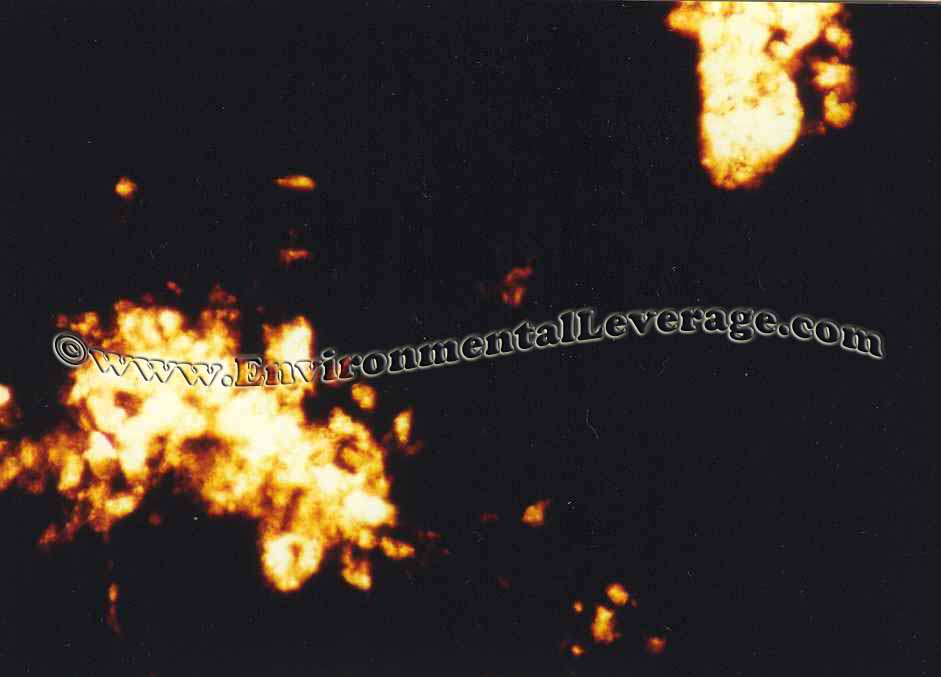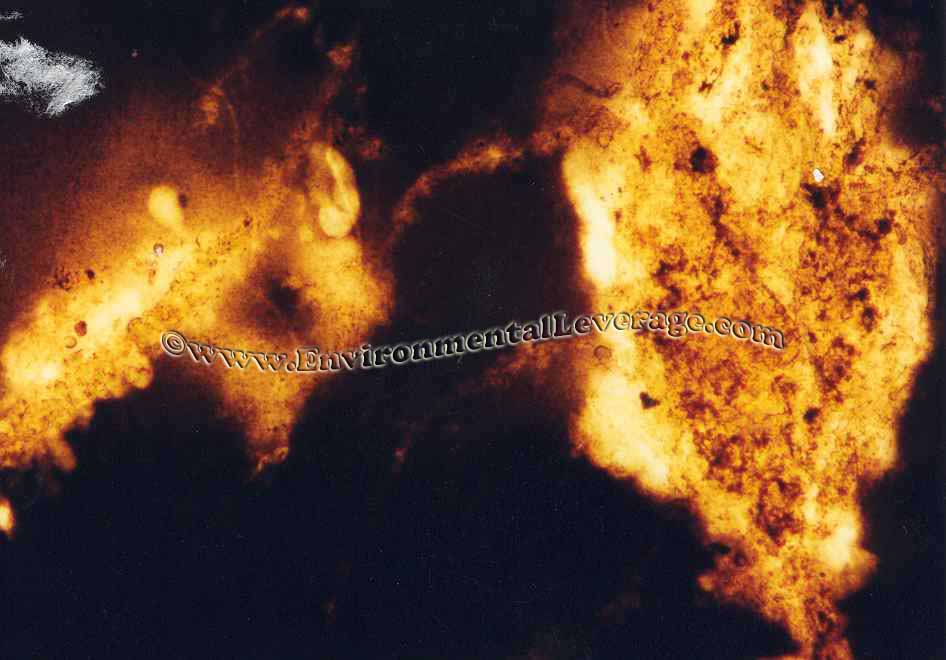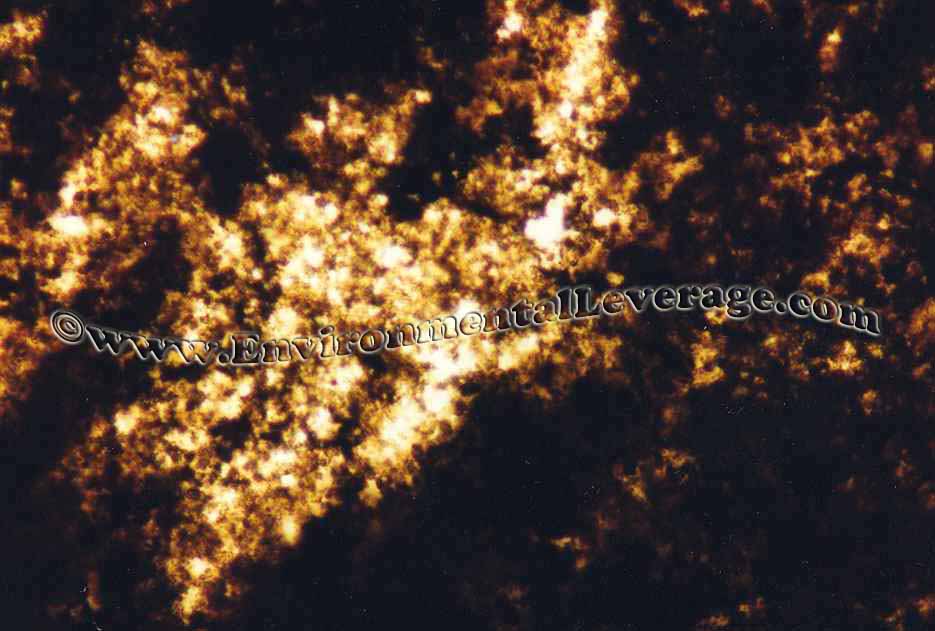Biological Products:
Bioaugmentation products for Wastewater applications in Papermills, Refineries, Chemical, Tanneries, Municipalities, Textiles, Steel, Agriculture, Animal feedlot, Gun Powder plant, Food and Beverage- Dairy Products, Orange Juice factory, Wineries, Cookie factory, Vegetable processing plant, Meat packing, Barbecue Restaurant, Aquaculture, Ornamental Ponds with algae , CAFO, Nursing homes, Military, Campgrounds, Universities, Regulatory agencies, River and Lake remediation
Lab Services:
Filamentous Identification Lab Service. One reason to identify filaments is to determine the filaments characteristics and then determine the type present. If the type is found out, a root cause can usually be associated with a particular filament. If the cause is known, then a correction can be made to alleviate problems. Chlorination is only a quick fix. Without process changes, filaments will grow back after chlorination. Wastewater Biomass Analyses and Cooling Tower Analyses also available
Training Materials:
Training is an integral part of any job. Not everyone is at the same level of training. Many people want beginning concepts and basics. Some need technical information or troubleshooting. Some want equipment, technology or process information. We have developed a full set of Basic training, Advanced training, Filamentous Identification the Easy Way as well as custom training CD's Manuals. We also provide hands-on training classes and soon will have an Online "E-University".
Audits and Consulting:
At Environmental Leverage® Inc., we have a team of experienced individuals who come into your plant with a fresh pair of eyes. The system is checked from influent to effluent. System optimization, equipment efficiency and operational excellence are key components explored. Key Benefits Equipment efficiency Total Cost of Operation reductions Reliability and safety An onsite audit is conducted to examine system parameters, process controls, and current monitor and control procedures. A physical walk-through is conducted, process flow diagrams are examined, previous design criteria are examined and current standard operating procedures are evaluated along with data logs.
|
Microscopic AnalysesLatest News!
What's New!
We have just added "Virtual Audits" to our capabilities. Check out our new Services. We are in the process of developing new courses for our ""Online E-University" in order to meet the needs of our global customers that cannot travel to our public classes.Visit our new website www.WastewaterElearning.com/Elearning Using the Microscope
Microscopic Analyses is a significant but often overlooked way to monitor and control a biological waste treatment system. This can be a powerful tool and used to help to predict major changes long before they become a problem. The bacteria in the biological system perform 90% of the work as far as BOD removal. How well they grow and perform impacts TSS removal.
Evaluate your SystemA wastewater treatment plan is a biological “bug” factory. You need to grow bacteria to successfully meet final effluent permits. There are no replacements for the biological activity. You can build more equipment, you can use all the chemicals you want, but basically, it comes down to how well you can grow bacteria! So if you are running a “bug” factory, it would be a pretty good idea to check the status on your product – the bugs. In order to view the bacteria present in the wastewater system for monitor and control purposes, samples must be collected. Where, how and when you sample the MLSS or bacteria can make a total difference in how accurate the analyses; one thing to note if you have a municipal wastewater treatment plant. We have run analyses in the morning vs. the afternoon. There can be major changes in your biomass, depending upon the time of day, whether it is just after a weekend, or even if it is just after a major rain. Keep notes on when you take the sample. Take multiple samples during a normal day just once to see if there are changes in your system. Remember, the bacteria life span is 20 minutes to 2 hours, so 8-10 hours can sometimes make a difference in how the MLSS looks, mainly the types of higher life forms. If you get hit with a high loading, 4 hours later, the amount of amoebae, flagellates and higher life forms will change, so keep that in mind. This also can go for food plants, where the night shift is completely different from the day shift. In order to keep from chasing your tail, try to standardize your sampling. Take the same place the same time of day and keep track of trends, unless you know you just got hit by a big spill.
Preparation of a wastewater sample can be as simple as placing a drop of the sample on a glass slide, covering the droplet with a cover slip and examining it under the microscope. Unfortunately, if the procedure is done carelessly you will miss many important clues the microscope can yield, or even worse, add some artifacts that could lead you to incorrect conclusions!
Checking your BiomassOne of the first things to observe under the microscope is the size of the floc structures.
The picture on the left is a picture at 40x Dark Field-Poor Floc- high TSS
This water sample shows lots of small, weak, dispersed floc structures. This effluent will probably have high levels of TSS carryover. "Goldie Locks Floc" 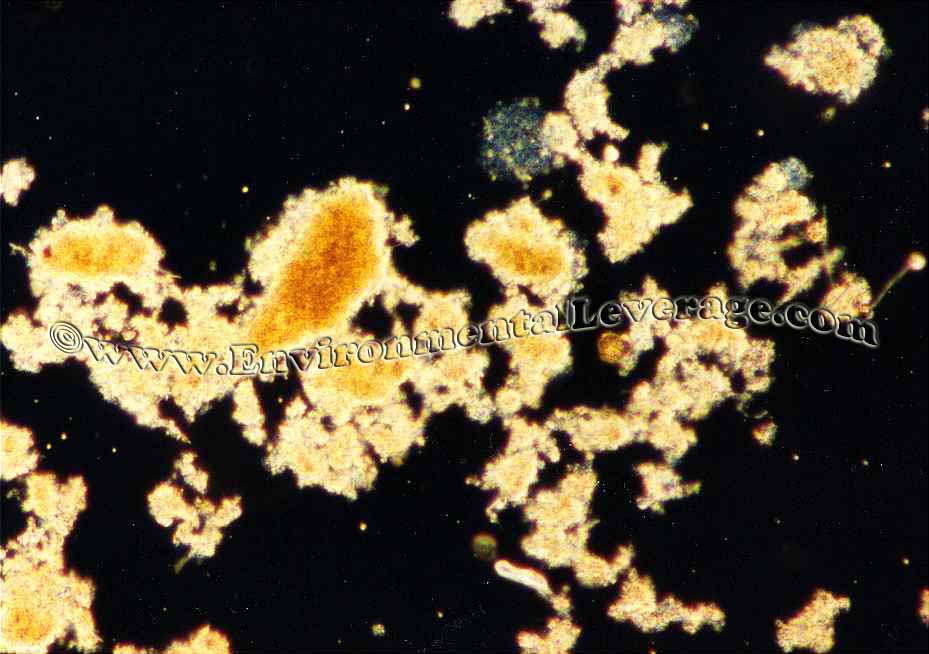
The picture on the right is what many plants would like to see. Large, firm, compact golden floc structures. There are some higher life forms present, a rotifer and stalked ciliate. There are few single celled bacteria and very little TSS should be present when these conditions are in the secondary biological system.
There is a bit of zooglea present in this sample though. More examples of floc characterization Additional things found in the biomass
Higher Life Forms
Typically the organisms represent only 5% of the biomass. They are usually the last to come and the first to go in a system if it is not running properly.
Filamentous Bacteria-Filaments are bacteria that grow in long chains.Filaments present in the system do not always have to mean a problem.
Some filaments are good if they form a strong backbone and add a rigid
network to the floc. In just the right amount filaments help give the floc
more structure and settle faster. Filaments are excellent BOD
degraders also. They typically only cause a problem when they become
dominant over the floc formers.
Algae, Yeast and Fungi-
Fungi always indicate a lower pH in the system. Sometimes it can be caused by holding solids too long and septicity occurring. This can easily cause the pH to locally drop. Anaerobic activity can also lower the pH. Algae is usually only found on the surface, since normally the MLSS is too dark, and sunlight cannot penetrate down into the MLSS. Check for solids build up around weirs, centerwells, sidewalls, etc.
Zooglea can be extremely large, non-motile bacteria. They can be either
"fingered or amorphous".
Zooglea grow usually as
India Ink Stain- Negative or reverse staining for polysaccharide coating. India Ink is used as a quick and dirty test to tell one of two things. This is an excellent quick and dirty test that can be used daily. One drop of India ink is added to one drop of the biomass. Everything will be dark except for the polymer generated by the biomass. A normal biomass will have some bright areas relative to the size of the floc structures. Extremely bright or excessive areas will indicate one of two things. A toxic shock to the system or nutrient deficiency. If there are higher life forms present, then a shock can instantly be ruled out and nutrient deficiency can be verified.
How are your bugs doing?
This amazing CD makes Identification of filaments Easy & Simple.
While combining treatment plant processes and troubleshooting
procedures. |

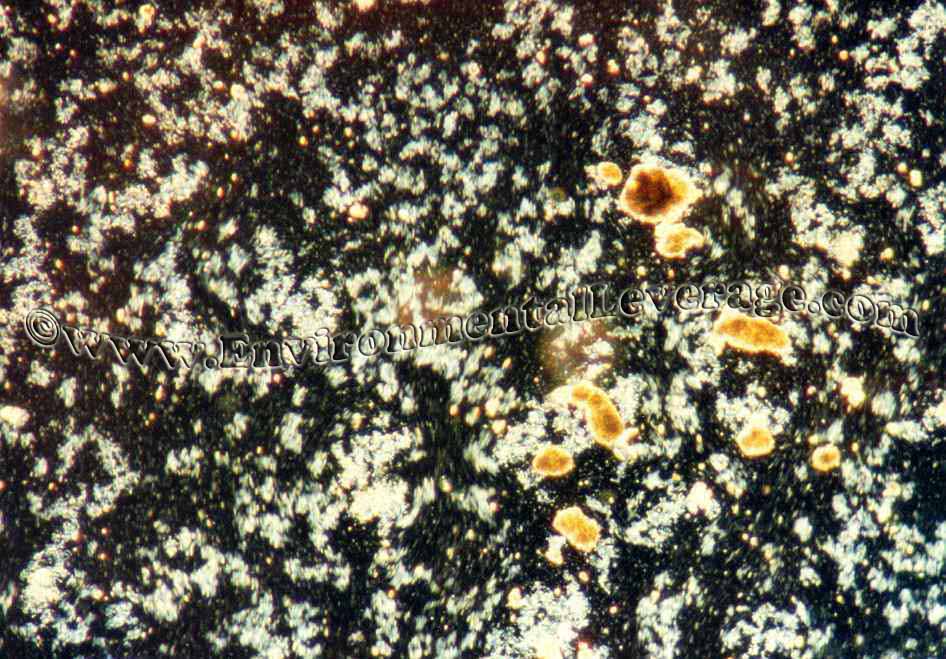
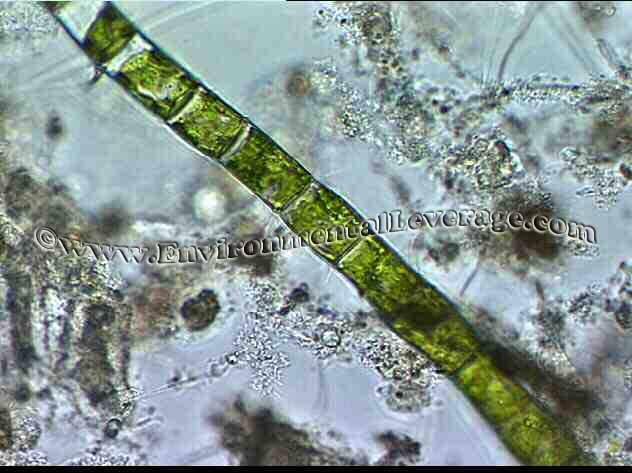 The
presence of large amounts of yeast can indicate a low pH, existence of
fermentative conditions or a severe phosphorous deficiency.
The
presence of large amounts of yeast can indicate a low pH, existence of
fermentative conditions or a severe phosphorous deficiency.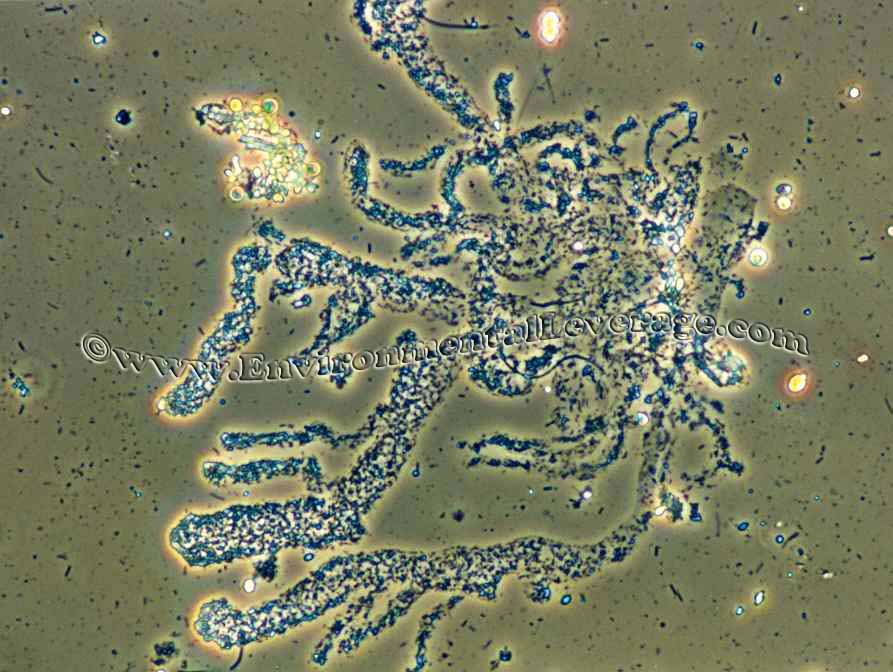 "amorphous" clumps or "fingered" like a tree. They can have the ability to
denitrify. Zooglea usually have the presence of excessive amounts of
polysaccharide coating. This can cause sliming problems in a clarifier or if
excessive when trying to dewater the solids. They can sometimes
indicate low pH in the system. This bacteria is usually found in
environments where there is a high F/M ratio where the soluble organic
compounds are readily bio-degradable. They also can be an indication
of nutrient deficiency (Nitrogen or Phosphorus).
"amorphous" clumps or "fingered" like a tree. They can have the ability to
denitrify. Zooglea usually have the presence of excessive amounts of
polysaccharide coating. This can cause sliming problems in a clarifier or if
excessive when trying to dewater the solids. They can sometimes
indicate low pH in the system. This bacteria is usually found in
environments where there is a high F/M ratio where the soluble organic
compounds are readily bio-degradable. They also can be an indication
of nutrient deficiency (Nitrogen or Phosphorus).